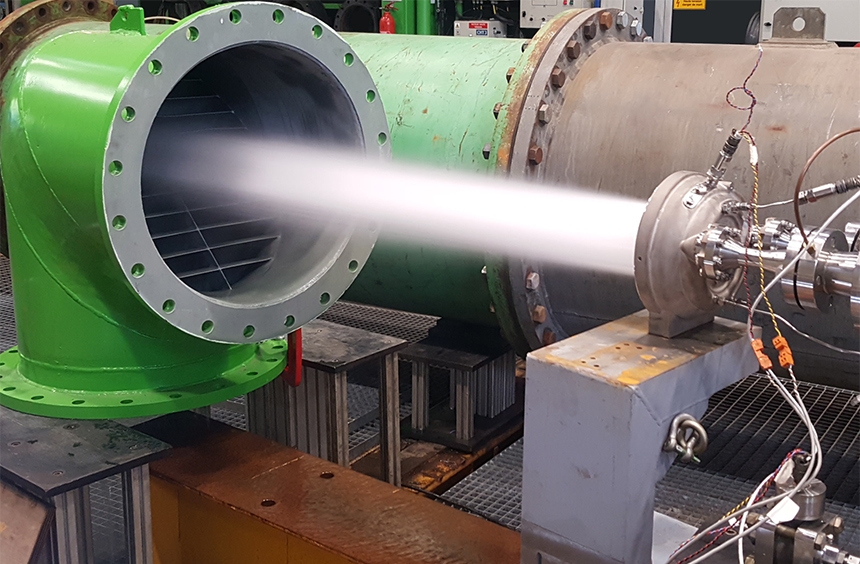Designed by ArianeGroup, the cryogenic Vulcain 2.1 engine, which will propel the Ariane 6 launcher during the first eight minutes of flight, successfully passed the different static fire test phases. In order to simplify and reduce production costs, ArianeGroup modified the manufacturing processes for many of the engine parts, and namely the gas generator injection head. Previously a multi-part assembly of over a hundred elements, it is now a unified part made by additive manufacturing. To test compliance of this geometrically complex nickel-alloy part with numerous cavities, ArianeGroup chose non-destructive hydraulic testing. A test bench adapted to application requirements was set up by Cetim in order to take measurements (pressure, flow, etc.) at both oxygen and hydrogen inputs, as well as over ten outputs. The objectives were to measure pressure loss and ensure homogeneous injection flow.
Fine particle filtration under high pressure
To avoid all particle contamination of the very narrow internal cavities, the water on this test bench must be extremely clean. Therefore, Cetim designed a dedicated filtration system to ensure that the water circulating in the injection head during testing contains no particles larger than 300μm. Filters, fixation interfaces and tightening techniques were selected after in-depth study to ensure mechanical strength of the filters during testing at pressures of up to 30 bars.
“The Cetim technical team demonstrated great ingenuity in designing and setting up the filtration system to protect our material from water-borne pollution. During various test phases, they were reactive and always ready to adapt to our needs,” declared Alexandre Barata, ArianeGroup functional manager for the gas generator.



